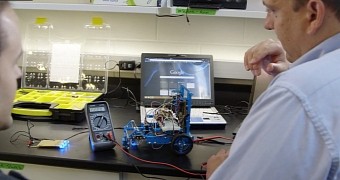You've probably heard about the Ophiocordyceps unilateralis or the zombie fungus that controls the brains of infected ants to make them kill themselves in perfect spots for the fungus to grow and multiply.
This time humans want to use a similar technique, but not on living creatures but on robots, using bacteria. In the July 16 Scientific Reports paper, Warren Ruder used a mathematical model to demonstrate that bacteria can control the behavior of an inanimate device, like robots.
The task was to build a living microbiome on a non-living host and control the host through the microbiome. Apparently, his first microbiome-to-robot test will include building real robots that will have the ability to read bacterial gene expression levels in E.coli using miniature fluorescent microscopes.
The growing research about how bacteria in the human body regulates mood and health through biological, if not mechanical, means made Ruder believe that such inputs could actually turn robots more into humans than any technological evolution.
Early behavior is quite telling
Ruder wants to couple bacteria-robot systems to simulate the widely accepted equations that will enable a better human-like behavior from robots: engineered gene circuits in E. coli, microfluid bioreactors, and robot movement.
In Ruder's mathematical model, the robot was equipped with sensors and a miniature microscope to measure the color of bacteria telling it where and how fast to go depending on the color pigment.
An interesting move from a robot, when directed by bacteria to look for more food, was to pause quickly before making its final approach, similar to a classic predatory behavior of higher order animals that stalk prey.
It's believed that this sort of biosynthetic experiments could be done in the future with minimal amount of funds, opening a new field of bioengineering and attracting much more researchers than before.

 14 DAY TRIAL //
14 DAY TRIAL //